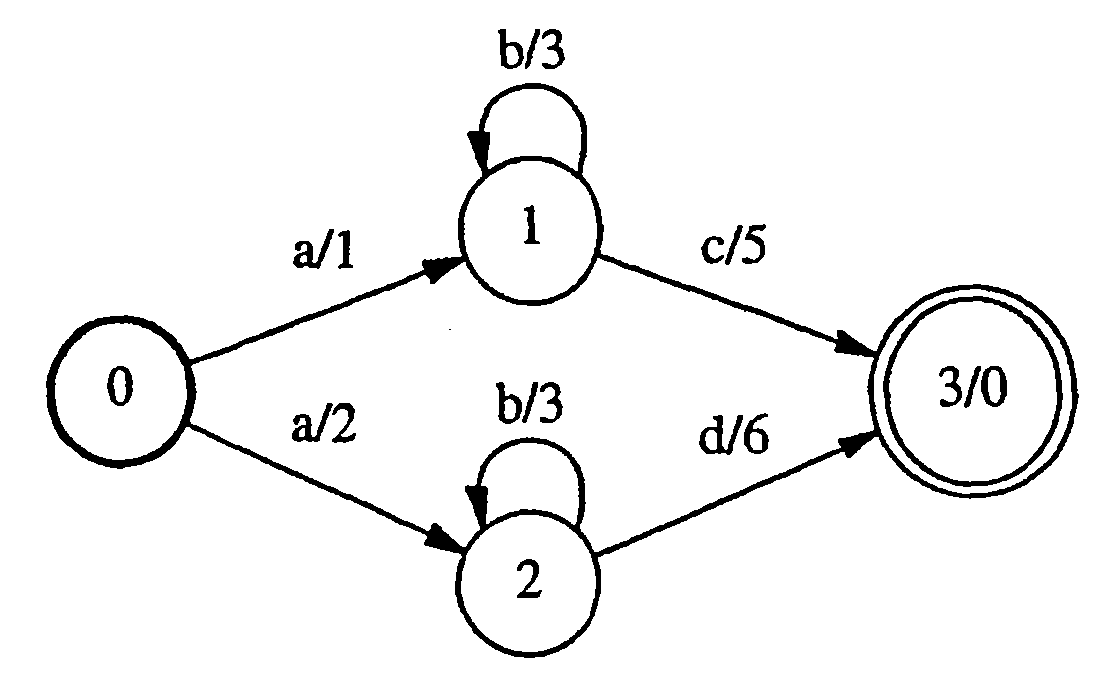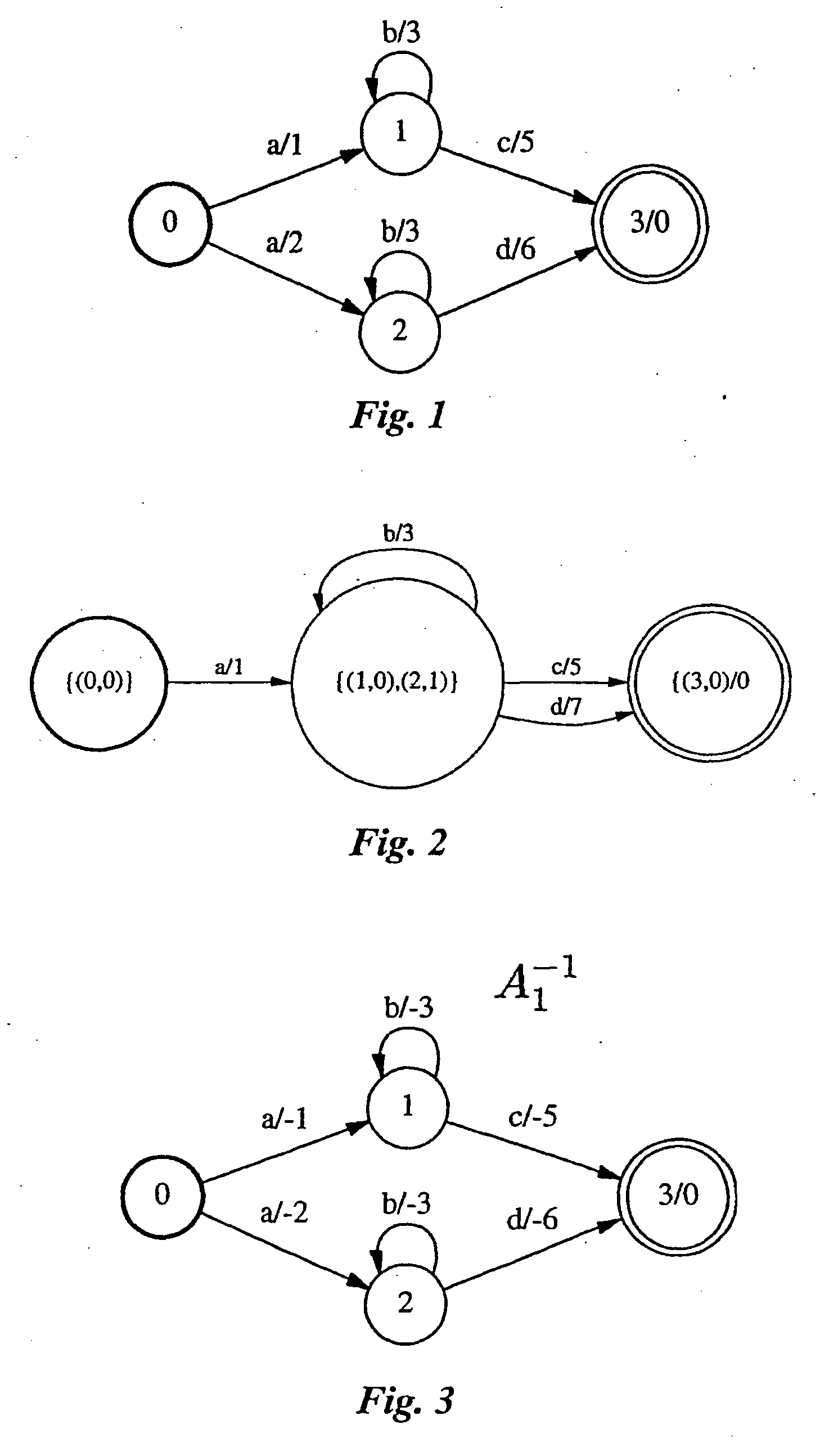Systems and methods for determining the determinizability of finite-state automata and transducers
a technology applied in the field of systems and methods for determining the determinizability of finite-state automata and transducers, can solve problems such as methods that are not particularly useful, and achieve the effect of high complexity
- Summary
- Abstract
- Description
- Claims
- Application Information
AI Technical Summary
Benefits of technology
Problems solved by technology
Method used
Image
Examples
Embodiment Construction
[0075] Finite-state automata are classical computational devices used in a variety of large-scale applications, such as text processing, speech processing and recognition, image processing and the like. Some applications in text, speech and image processing and recognition require weighted finite-state automata, which are more general devices, to account for the variability of the data and to rank various hypotheses generated during the processing or recognition process. A weighted finite-state automaton is a finite-state automaton in which each transition or edge between two states is labeled with some weight, in addition to the usual input symbol. Finite-state transducers are finite-state automata whose transitions or edges are additionally provided with an output label.
[0076] Weighted finite-state automata and transducers provide a common representation for the various components of a complex system in many applications. Weighted finite-state automata and transducers admit gener...
PUM
 Login to View More
Login to View More Abstract
Description
Claims
Application Information
 Login to View More
Login to View More - R&D
- Intellectual Property
- Life Sciences
- Materials
- Tech Scout
- Unparalleled Data Quality
- Higher Quality Content
- 60% Fewer Hallucinations
Browse by: Latest US Patents, China's latest patents, Technical Efficacy Thesaurus, Application Domain, Technology Topic, Popular Technical Reports.
© 2025 PatSnap. All rights reserved.Legal|Privacy policy|Modern Slavery Act Transparency Statement|Sitemap|About US| Contact US: help@patsnap.com



